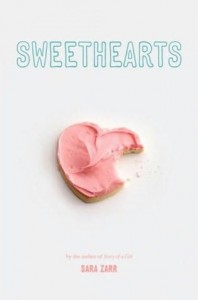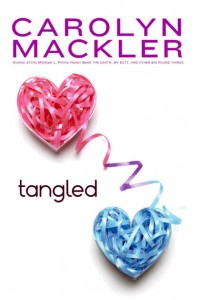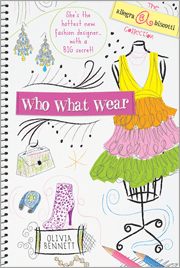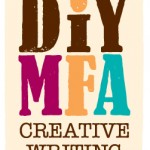 Welcome Back to YA Cafe, where book lovers can gather and chat about teen literature. I’m your barista, along with Ghenet from All About Them Words.
Welcome Back to YA Cafe, where book lovers can gather and chat about teen literature. I’m your barista, along with Ghenet from All About Them Words.
Each Friday we pick from a menu of topics and share our thoughts on our respective blogs. We’ve also got plans brewing for interviews, events and even some exciting giveaways, so stay tuned! Join the discussion by responding in the comments, on your own blogs or on twitter using the hash tag #yacafe.
You know when you’re reading a book, and you’re about three chapters in, and all you can think is “where is the author going with this?”
Then you get this sneaking suspicion that this author knows what she’s doing–maybe because you’ve read previous books, or maybe because you want to give her the benefit of the doubt. It doesn’t really matter why you keep reading. All that matters is that you’re willing to trust the author and go along for the ride.
And you know that feeling you get when you reach the final chapters of that same book and the author managed to pull off what you thought was impossible and the ending totally delivers?
That was exactly how I felt when I read Carolyn Mackler’s Tangled. Having read all of her previous books I was excited… but also slightly terrified… to read this book. This is a new approach for her, juggling four different point of view characters (two of them are boys!), and telling a story in short spurts rather than one long narrative that spans the entire novel.
I was worried about a lot of things. Like what if it wasn’t really one story? What if it turned out to be four loosely-connected novellas? Don’t get me wrong, I have no problem with novellas, but if I’m sitting down to read a novel, I have certain expectations. Like, I need an overarching narrative, however loose that narrative may be. And I want to see the characters grow and change throughout the book. How on earth was Mackler going to pull this off if she was jumping from one character to another and if each character’s story takes place in a different time/place than the other stories?
When I read Jena’s story, my apprehensions grew exponentially. Jena’s character is an archetype we’ve seen in Mackler’s work before (in particular, the protagonists in her first 3 books all have certain similarities to Jena). But the thing that always made Mackler’s depiction of this archetype satisfying in her other books is that, in the end, the smart-but-not-very-popular girl who’s insecure about her looks always seems to learn to accept herself as she is. It’s a message of empowerment that I always looked forward to in Mackler’s work. Needless to say, by the end of Jena’s section of Tangled I was devastated. It felt like the message was: life sucks, and it keeps on sucking.
With each subsequent section of the book, I grew more relieved. At first, I was worried that we would be getting a “grass is always greener” moral and that the point of the book was just to show that even so-called popular kids have problems. But I should have known that Mackler wouldn’t settle for an answer that easy. In the end, this book isn’t just about seeing the other side of a situation or understanding how the other person feels. Really, this book is about reaching out to that other person.
The structure of the book perplexed me at first. We see a lot of “before” and “after” moments with these characters, but we rarely see the actual change. Most of the time, the moment of transformation happens “offstage” between sections and we only get hints of it later on in the novel. Then it occurred to me that this book really isn’t about change. The fact that these characters will change is a given, but what truly matters is how these characters help to transform one another.
It takes a lot of guts to write a book like this, where you have to hope that your readers will trust you to know what you’re doing. Mackler had gotten really good at writing the smart-but-not-very-popular heroine and suddenly she comes up with Tangled which turns all her previous books on their heads. Not many authors are willing to break away from their tried-and-true styles to try something new, but Mackler definitely did that here. And suffice to say, she did so beautifully.
Tangled is an interesting departure for Mackler. While her previous books have mostly focused on one protagonist’s path to self-discovery and acceptence, this book emphasizes the importance of connection with others. In the end, I had nothing to worry about, but worrying actually made me enjoy the book all the more. I became invested in wanting to see how Mackler was going to pull this off, how she was going to redeem some seemingly un-redeemable characters. But she did.
It’s like that car insurance commercial: I should have known all along that I was “in good hands.”
Want to read more about Tangled: check out Ghenet’s response at All About Them Words. Then share your thoughts with us in the comments or on your own blog. (Don’t forget to leave a link in the comments so we can check it out!)













 Call me Gabi (pronounced gah-BEE). I'm a writer, freelance teacher, and a lover of books and words. I'm also the instigator of DIY MFA. iggi's my sidekick, but he thinks he's the brains behind this operation.
Call me Gabi (pronounced gah-BEE). I'm a writer, freelance teacher, and a lover of books and words. I'm also the instigator of DIY MFA. iggi's my sidekick, but he thinks he's the brains behind this operation.
 Body Image in Literature
Body Image in Literature YA Cafe: Interview with Julia Mayer
YA Cafe: Interview with Julia Mayer YA Cafe: New and Improved!
YA Cafe: New and Improved! The new face of DIY MFA!
The new face of DIY MFA!